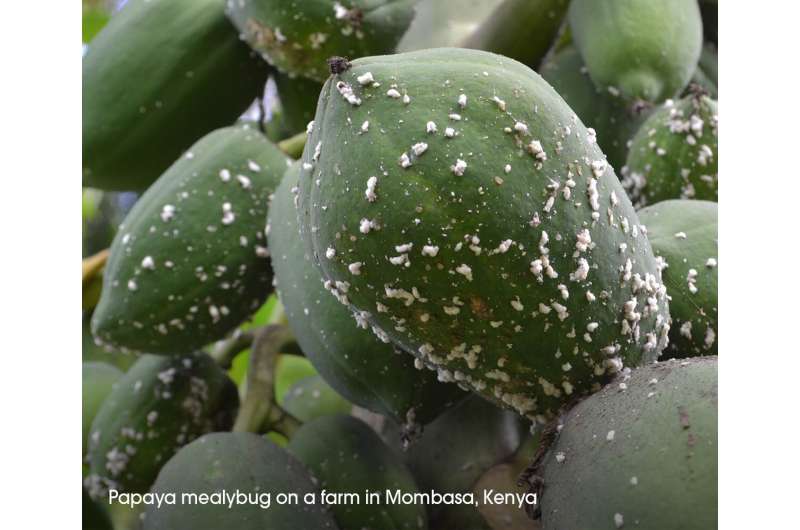Credit: CABI
Non-native alien plants and animals are threatening fish production, water supply and other natural resources in almost three quarters of African countries, a study has concluded.
Invasive alien species are plants and animals introduced by people to foreign locations that then cause harm. Given their threats to the variety of life globally, the UN Convention on Biological Diversity targets the control or elimination of priority invasive alien species by 2020.
The study, which was conducted to assess effects of invasive alien species in Africa, involved a review of national reports from 48 African countries and scientific literature published by October 2018 and indexed in two databases: SCOPUS and Web of Science.
It found that of the 48 countries polled, 35 reported negative impacts from invasive species, representing 73%.
"They [alien plants and animals] are a threat to food security since they have negative impacts on fish production, agricultural productivity, grazing and water supplyprimarily," says Benis Egoh, lead author of the study and an assistant professor at the University of California Irvine, United States. "We have to act now and not wait until the damage is irreversible."
Egoh adds that, other than South Africa, most African countries have limited expertise to fight invasive species.
Research capacity
According to the study, published in the journal Environmental Management last month (1 May), South Africa alone had 22 of the 36 studies on invasive alien species, followed by Ethiopia (six) and Kenya (four). The studies showed that invasive species are impacting fish provision, agricultural productivity, water supply and water quality, among others, hitting incomes.
The most common invasive species was water hyacinth, with at least 21 countries reporting it.
However, Arne Witt, invasion biologist for the Centre for Agriculture and Bioscience International (CABI, the parent organisation ofSciDev.Net), said the study would have been more representative if it excluded South Africa, which has been studying invasive plants and animals for more than 100 years.
"You have to compare apples with apples," he says.
Witt explains that when he worked in Ethiopia, Ghana, Uganda and Zambia, major gaps such as lack of policy, enforcement of polices and lack of capacity and development existed, adding that despite the situation improving 15 years later, more efforts are needed.
But Cathy Sutherland, a senior lecturer at the University of KwaZulu-Natal in Durban, South Africa, says that 73% of African countries reporting on invasive alien species shows a commitment to addressing the impacts of the problem.
While there are few peer-reviewed scientific publications on the topic, Sutherland says this does not necessarily mean that work isn't being done.
"It would be important to explore other ways through which this knowledge and expertise is shared, for example in municipal reports," says Sutherland, citing the need to create policy briefs to guide policymakers.
Witt adds that databases such as those run by CABI and the International Union for Conservation of Nature provide information on how to identify and manage invasive alien species.
More information: Benis N. Egoh et al. Setting the scene for achievable post-2020 convention on biological diversity targets: A review of the impacts of invasive alien species on ecosystem services in Africa, Journal of Environmental Management (2020). DOI: 10.1016/j.jenvman.2020.110171
Journal information: Science , Environmental Management , Journal of Environmental Management
Provided by SciDev.Net






















